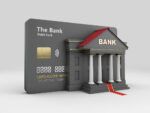Real-Time Payments: Real-time payments refer to transactions that are processed and settled immediately, usually within a matter of seconds, allowing funds to be transferred almost instantly from one party to another. These payments occur in real-time, meaning there is no delay between the initiation of the payment and the recipient’s access to the funds. Real-time […]









Recent Comments